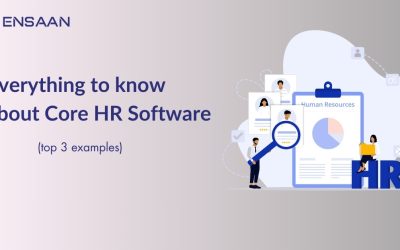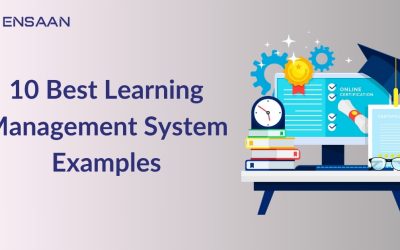The Learning Management System has become the backbone of online education and corporate training in this digital era.
But what exactly is required to make a Learning Management System (LMS) good?
Here are the key features you need to know to spot the best LMS.

What is a Learning Management System?
The Learning Management System is an application software used for managing, documenting, tracking, reporting, and delivering courses, training programs, or learning and development programs.
Consider it as the ultimate tool in facilitating online learning at making educational processes more efficient.
What makes a Good Learning Management System?
Every organization has a different set of objectives when using an LMS to deliver training.
What makes a good LMS considering those differing objectives is very much dependent on the individual needs and wants of each application.
LMSs need to be able to offer delivery, tracking, and monitoring on a centralized platform.
The platform should be easy to use, intuitive, and easy to update and pivot in order to meet the ever-evolving demands of learners and training programs.
Adaptive platforms ensure longevity and that training programs are future-proofed, thereby offering high ROI.
Another issue that needs consideration within the context of what makes an LMS good is the fact that not everybody learns in the same way.
A good level of personalization should be allowed, which gives learners the capability of configuring it to their best suitability.
Accessibility needs are also supposed to be put into proper consideration.
Features of a Learning Management System

A robust LMS should come equipped with several key features that enhance the learning experience for both educators and learners.
Here are some of the most important ones you should look for.
1. Ease of Use:
Learning can already be challenging. You don’t want to add an extra obstacle in the process of picking a hard-to-navigate LMS that isn’t user-friendly, especially for first-time eLearners.
Poor user experience makes developers spend 50% of their time redoing projects.
That’s a huge waste of time and precious resources.
Invest in an LMS with a user-friendly interface to avoid wasting valuable resources trying to fix the UI and aesthetic design.
It doesn’t matter if it’s the learners looking up courses, or administrators uploading content or tracking progress, the LMS ease of use is one of the most overlooked items in planning the training, yet it’s one of the most vital ingredients to training program success.
If you don’t have experts around to run and manage your LMS, look to a managed learning service provider who will work on delivering on behalf of your training program.
2. Personalization:
The selling point of eLearning is that it supports self-directed learning. Learners can educate themselves at their own pace on the subjects that they feel are their highest priorities.
A good LMS should be able to provide a suite of personalization features that enable users to set specific goals to fill their knowledge gaps.
Personalization, however, is not all about being able to decide on which courses to take but also extends to letting users create groups that can be customized for a certain curriculum so that those with similar goals can easily find what they need.
There is space for discussion in forums, which could also be used as an avenue for receiving feedback to improve courses.
3. Accessibility:
Another significant advantage of eLearning is that it can be done from any place and at any time, providing there is access to an internet connection and authorized access to the LMS.
Be it from home, when travelling, or even in a cafe, an LMS allows one to have on-the-go training. eLearning should also be optimized for use with smartphones, tablets, and other devices.
Being accessible also extends into the realm of the LMS catering to the disabled.
Inclusivity should always be part of the equation in workforce development.
4. Gamified Elements:
When something is often thought of as a difficult or tedious learning task, it is so much easier to get people on board if it can be framed as a fun competition that rewards dedication and mastery.
Things like leaderboards, trophies, point systems, and timers can instill a sense of competitiveness and accomplishment that will drive learners to engage with the LMS.
That’s why gamification works.
That is why it has been so popular across many industries.
In a study of gamifying education that came in the Journal of Education for Business, 67.7% of students found a gamified course more motivating than a traditional course.
The businesses see employee engagement increased by 60 percent due to gamified training.
5. Scalability:
If growth is vital to your business, scalability should be a key consideration in your choice of LMS.
It’s all well and good that it can run well when you’re just starting with it.
How it will hold up when you start branching out with various content formats, uploading more courses, registering more users, and tracking more data-that is a different story altogether, and that will tell if that LMS is worth the investment or not.
The access via cloud shows the ease with which an LMS scales up.
The scaling-up of eLearning does not get easier than this, where the growth of your organization is uninhibited by installations on each device.
6. Reporting and Tracking:
Any reasonable LMS is able to gather data related to interaction with the platform in order to understand how end-users will interact with courses they are enrolled into, such as course progress and completion rate.
You would want an LMS that could get more granular with its tracking features.
For example, it would be nice to show dates and times of when the user logs in, how long does it take for a course to be completed, and how many mistakes are made prior to arriving at the correct answer for a specific quiz question.
This will, in turn, be able to present data legibly through analytics reports to LMS instructors and administrators. Subsequent concrete actions can then be taken to tweak, improve, and avoid similar mistakes in the future.
7. Security:
Data privacy has become necessary when applications, among other internet-connected platforms require personal data and contact information from their users.
Learning management systems aren’t an exception, especially when accessed via homes with personal devices.
Ensure that your users don’t suffer from a data breach and have their information leaked.
When searching for an LMS, look for privacy control options and a backup system for your data.
Also, make sure the company’s servers are secure.
8. Course Creation:
Many LMS’s have course creation capabilities, giving you templates you can slightly customize.
You might find very quickly though that getting a bare bones LMS limits the types of courses you can create.
See whether the LMS you are considering can let you include Assignments and Tests within a course, create a Resource Centre for extra links and further reading and then build an internal information repository.
9. Cloud Servers:
Not every organization is capable of storing eLearning resources in-house while at the same time keeping sensitive data secure.
As a small to medium-sized business owner looking to utilize an LMS with your employees, it serves you best to seek out cloud-based hosting.
LMS using cloud servers means hosting all data is taken care of by the vendor.
In such a scenario, you won’t have to bother about technical maintenance.
As already pointed out, it also allows for rapid scaling as no installation of software is required.
The security, while vital, will not be that much of a resource cruncher since the vendor shares most of the burden with your data sitting at his place.
10. Learner Support:
No LMS is perfect. Your company is bound to run into a problem, whatever platform you choose, whether it’s a technical issue or human error.
All the good features your LMS might have mean nothing when you can’t use them, and you don’t receive learner support from the vendor.
Since users will be accessing the LMS from anywhere and at any time, the vendor should provide 24/7 support services.
They should respond quickly to queries via email, telephone, or online chat.
There should be at least some troubleshooting or self-help guides within the LMS.
Also, in case you have learners spread across the globe, multilingual support is a must.
How to Choose the Right LMS?
When choosing an LMS for your business, think about its purpose whether it’s for training staff, partners, customers, or end-users.
Each group needs different features, so pick what suits them best.
With more companies moving training online, the demand for good LMS platforms is growing.
Don’t just pick the first one compare features, pros, and cons, and ask for feedback from others.
If you need more help, check out our guide or contact us to learn how EnsaanTech Learning can support your business.

Conclusion
Choosing an excellent Enterprise Learning Management System requires a careful analysis of each and every factor, from usability to security measures.
Focus on the main features described above, in order to be able to choose a learning experience platform or an LMS that will satisfy both your present and growing needs of your organization.
Remember, investing in an effective LMS is investing in the future success of your learners!
You can Find the best LMS in the UAE for a complete learning experience.
FAQs
An LMS is an online platform for managing, delivering, and tracking educational content. It is highly required for those organizations who want to facilitate their learning process.
Of course! It aids small businesses in training employees efficiently to save them both time and money.
While not necessary, gamification really enhances engagement and motivation, so it’s definitely a plus.
The cost will depend on the features, scalability, and also the vendor. There are some free basic systems, but the advanced platforms require a serious investment.
Some of the trends that are shaping the future of LMS platforms include AI integrations, designs considering mobile-first approach, and VR-enhanced learning.

















